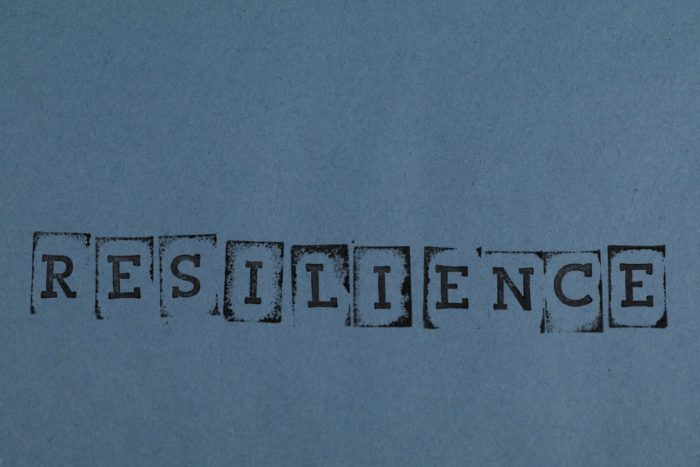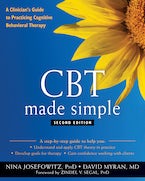By Nina Josefowitz, PhD, author of CBT Made Simple, 2nd edition
In the last few years there has been an increased interest in the role of compassion, mindfulness and value driven living in the role of mental health. In this three part series I am going to show you how to increase your effectiveness by incorporating these approaches into your CBT practice. I am going to cover behavioral activation and compassion, working with negative thoughts from a mindfulness perspective and how identifying key values can help your clients face their fears. I will focus on applying these approaches to specific difficulties related to COVID, but they are applicable to non-COVID times as well.
COVID -19 has been hard on everyone’s sense of well-being. Almost all my clients and friends are feeling more down than usual. There have been major changes in everyone’s life. It makes sense so many people are struggling.
So, as clinicians how do we help our clients? I want to suggest a powerful combination of behavioral activation and compassion. Although I designed these interventions to help clients impacted by COVID-19, they can be equally helpful with clients experiencing other stressful life events.
First, we need to help clients understand why they may be feeling down. I start with looking at how my client’s life has changed, and how without structure; without activities that give pleasure; without seeing friends, family, and going out; and without physical activity, it is very hard to feel good. Throw in a high dose of uncertainty and loss of control over your life and your finances and most people are also going to feel anxious. This is important as it takes the emphasis away from “why am I not coping better?” and “what is wrong with me that I am down and not doing anything?” and moves the focus to “this makes sense,” and “there have been major changes in my life.” As clients understand the cause of their distress, they often start to adopt a more compassionate, problem-oriented stance towards themselves.
Second, model a compassionate, kind attitude. Validate, normalize, and acknowledge that this is hard. Tell your clients, “this is hard.” Use your general counseling skills to ask open-ended questions about what it’s like to be isolated, have no structure, and be home; or what it’s like to be out working with the anxiety of COVID-19? Use summary statements and reflections to indicate you’re listening. Give your clients space to acknowledge the changes in their lives and how draining and difficult it has been. Compassion is about your tone of voice and nonverbal attending as much as what you say.
Third, look for your clients’ strengths. Has your client persevered in an activity? Have they continued to care for a partner, friend, child, or pet? Have they continued to work despite it all? Have they refrained from going back to an old, unhealthy habit? Have they maintained any healthy habits—it’s hard not to binge watch Netflix every night. Let your clients know what you see, and that good coping and functioning doesn’t just happen, you see the effort. In Chapter Two of CBT Made Simple, you can learn more about how to see and use clients’ strengths in therapy.
Fourth, here comes the behavioral activation part. Problem-solve with your client what they can do to make their lives even a little bit more enjoyable. My experience is that clients know it would be “good for them” to be more active, but it is hard to get going.A big pitfall is that clients tend to focus on what they “should” do rather than what would lift their mood. I ask clients “what would your wise-self tell you to do? And what do you think might boost your mood?” I also encourage clients to think about what a kind, compassionate friend or family member would suggest. I ask them to think of someone who cared for them deeply and truly understood their life, or to imagine such a person. I pause and allow my clients to imagine and really hear what this person might say to them.
It can be helpful for clients to target times during the day when they feel particularly low. Sometimes it is better to expand an existing activity, and sometimes it can be better to add a totally new activity. It is important to make sure that activities are developed collaboratively; that they are specific, concrete, doable, naturally reinforcing, and can be part of a regular routine. For example, “start painting” is less effective than “find my old paints and try to paint between 1 pm and 2 pm on Thursday.”
Positive psychology tells us that we can increase our sense of well-being if we 1) interact with people we enjoy; 2) exercise, particularly in nature; 3) regularly practice gratitude; 4) practice mindfulness, even briefly; and 5) try to savor the moment. I encourage my clients to add some of these activities into their behavioral activation plan. In Chapter Four of CBT Made Simple, I explain how to motivate clients to engage in behavioral activation and what you can do to increase its effectiveness.
Fifth, be compassionate and kind towards yourself. COVID-19 is hard on everyone. You have your own worries and anxieties. It’s hard being a therapist in these times. You wish you had a miracle cure for your clients’ difficulties, and probably sometimes feel inadequate. The fact that you are reading this blog suggests the care and concern that you bring to your work. Take a moment to acknowledge your own efforts. This coming week try to use the above steps. You will not only give your clients a safe space to acknowledge their difficulties, but there is also a good chance you will increase your clients’ resilience and help improve their mood. Remember to persevere, it may take a while.
Nina Josefowitz, PhD, is a psychologist and an acclaimed teacher known for her interactive, experiential approach. She has taught cognitive behavioral therapy (CBT) to mental health workers throughout the world, including psychiatrists and psychiatric residents in Ethiopia, psychologists in China, and graduate students in India. She has given workshops on CBT to social workers, nurses, occupational therapists, counselors, psychologists, and students in North America. For more than twenty years, she has taught CBT to graduate students in the department of applied psychology and human development in the Ontario Institute for Studies in Education (OISE) at the University of Toronto. She has published in the areas of trauma, women’s issues, ethics, the therapeutic relationship, and a variety of issues related to CBT. Her most recent interests include adapting CBT to diverse populations and developing experiential teaching methods. You can visit her website at www.ninajosefowitz.com.



 2024 Peace Playbook: 3 Tactics to Avoid Clashes with Your Partner
2024 Peace Playbook: 3 Tactics to Avoid Clashes with Your Partner